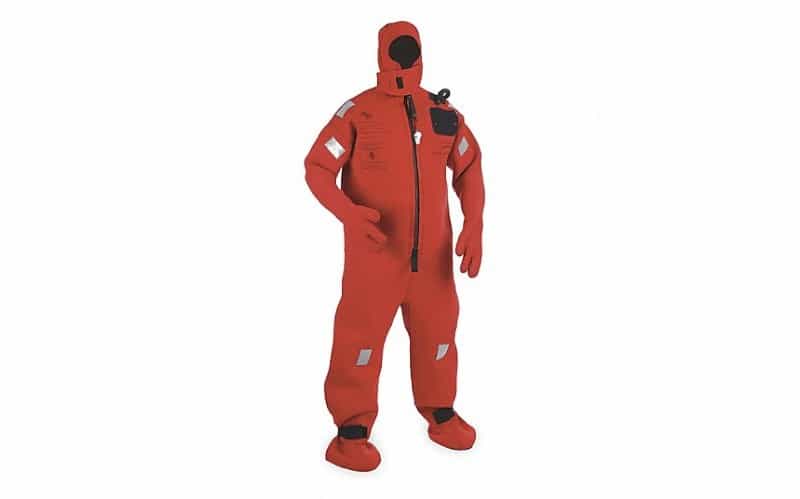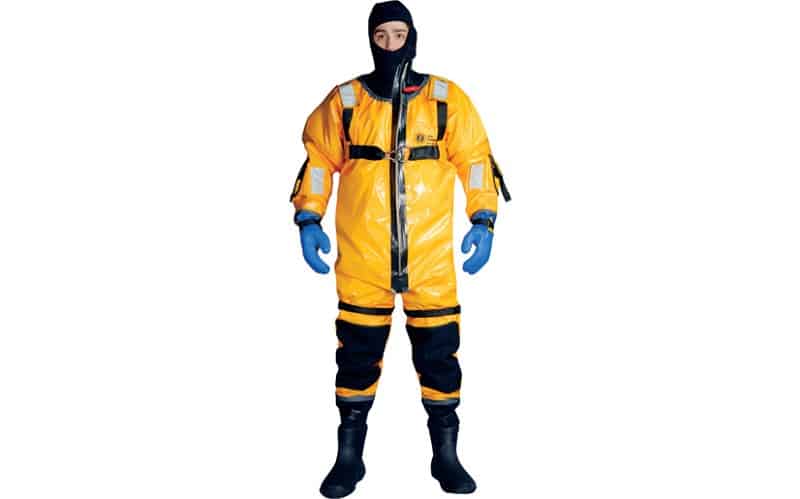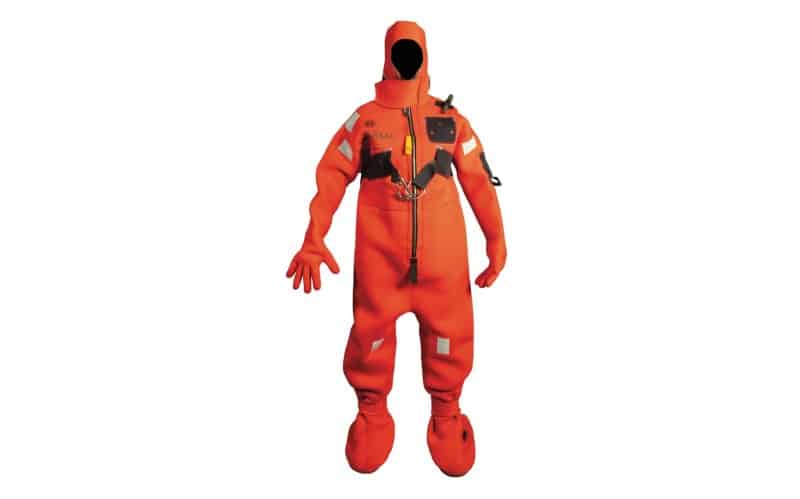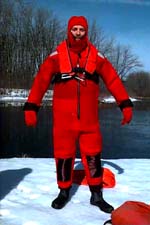The Best Ice Rescue Suits and How They Work

Stearns Cold Water Immersion Suit

Mustang Survival Ice Commander Rescue Suit

Mustang Universal Adult Survival Neoprene Solas Immersion Suit
Not all ice rescue or cold water rescue suits are created equally. Using an ice rescue suit is almost always dangerous. For that reason, you should never try to perform a cold water or ice rescue without proper training. Always alert authorities when someone’s life is in danger. Once you are trained, we can help you choose the best ice rescue suit to meet your needs.
Stearns Cold Water Immersion Suit

The Stearns Cold Water Immersion suit is built to exacting SOLAS standards and is USCG approved.
- It features a pocket for a SOLAS whistle and lights.
- The suit is made of a neoprene construction for warmth and flexibility and features inflatable head support.
- A stainless steel lifting harness and buddy line allow for assistance in rescuing those in the water once contact has been made.
The suit is easy to get into either alone or even faster with assistance. It’s incredibly durable and can genuinely mean the difference between life and death.
As with any ice rescue or immersion suit, you need to be well-trained to use this properly. We don’t ever recommend trying this on for the first time and then diving into the water to try to save lives. Training is extremely important.
Mustang Survival Ice Commander Rescue Suit

If you’re looking for the best of the best, Mustang has you covered. The Mustang Ice Commander Rescue Suit is next level. The price point is definitely not for everyone, but if you want to have the same gear that ice rescue professionals like firefighters or Coast Guard may use, then this is it. This has the best flotation and insulation performance you’ll find.
One thing to keep in mind is that we really mean it when we say this is for trained professionals. If you are unfamiliar with how a survival suit operates, we don’t recommend using this suit by any means. Proper training is needed if you are looking to save lives.
The suit is recommended for still waters rather than a rushing river and icy cold water conditions.
- It’s 45% lighter than similar suits but built to be tough and warm.
- The shell is welded nylon
- It features dexterous rubber gloves and an ice awl pocket.
- The liner has zipper and Velcro attachments.
- The knees are reinforced, and the non-slip rubber soles help maintain traction on slippery surfaces.
There’s a buoyancy liner to keep you afloat and warmer longer. The suit is SOLAS approved and can handle adults from 110 lbs to 330 lbs. There’s an integrated chest harness, water-tight hood, and face seal.
Mustang Universal Adult Survival Neoprene Solas Immersion Suit

Some of these immersion and cold water rescue suits can cost a serious amount of money. If you’re looking for solid value without compromising on quality Mustang’s neoprene cold water immersion suit is a great choice. It’s no bargain basement, but it’s definitely a lower price point.
- The retrieval line is rated for up to 1000 pounds of dead weight, meaning you and whoever you’re rescuing can be reeled in by others in any conditions.
- The face seal is watertight, and the ankles are adjustable.
- The neoprene in the body is 5mm, preventing hypothermia and adding buoyancy.
How Does an Ice Rescue Suit Work?

Ice rescue suits often look too large but remember they are meant to be worn over clothing. Oversized sizes are also available.
Use in Ice Rescue Operations
Proper training is crucial for being able to swiftly don an ice training suit even without assistance. With aid, it can be done even faster.
Prevention of Torso Reflex
Torso reflex is an involuntary reaction to entering freezing water. You gasp and suck in air quickly and deeply. You must keep your nose and mouth covered when you enter the water in an ice rescue suit to avoid the reflex. It’s almost impossible to consciously resist the reaction and you can breathe in water as a result.
If you’re going into the water to save someone, be aware that they also would have suffered this reaction and may have taken in a lot of water, reducing their ability to think clearly or render assistance in their own rescue efforts.
How Search and Rescue Teams Use Ice Rescue Suits

- Carefully assess the ice conditions, while constantly watching the victim.
- The rescuer must be tethered by their chest harness
- The best option for a water rescue is to swim on the back, using the gloves like paddles, headfirst towards the victim. This will prevent as much water as possible from entering the suit.
- If there is a full rescue team, those on shore can tug on the safety tether to let the rescuer know they’ve reached the victim.
- Provide the victim with a flotation vest or just hold on until the rescuer is pulled to safety.
All line tending, boat, and on-shore support personnel should be wearing appropriate PFD’s when in, on, and around the water. In addition, a back-up rescuer should also be available in a cold water or Ice Rescue Suit to assist the primary rescuer if required.
Extra Rescue Aids
To make an Ice Rescue Suit more effective, we recommend several additional rescue devices to be used with this suit.
- Inflatable Vests: Once the tethered rescuer reaches the victim, he can inflate the vest by pulling on the inflation cord or by manually blowing into the inflation tube. The use of an inflation vest provides the rescuer with 20 – 35 lbs. of additional buoyancy
- Lights: Any night rescue should be done with lights. A steady-beam PFD light or light-tracker device can be used to illuminate the rescuer. Strobe lights are not recommended to be worn by the rescuer unless they can be attached to the back of the rescue suit.
- Quick-Release Devices: If the rescuer is tethered in moving water, it is critically important for him to be able to release the tether line quickly if necessary. A separate quick-release harness can be added to the suit for attachment of the safety line. If necessary, the rescuer releases the harness, which immediately frees him from the tethered safety line.
Acknowledgments
Special thanks are extended to the Keene Fire Department in Keene, NH for their assistance with this article.
The Bottom Line
An ice rescue or cold water suit can be the difference between life and death. Proper training is vital before any attempt at using an ice rescue suit is made. Without training, both the victim and the potential rescuer could be in danger.
Ice rescue suits are usually reserved for search and rescue teams and fire departments. They can also find a place on anything from oil rigs to commercial fishing vessels. Those who spend a lot of time on the water sailing could benefit from learning how to use one and keeping it in storage as well. Always make sure you are being safe and try to minimize the chances you’ll ever need to actually use one.
Categories: nauticalknowhow











